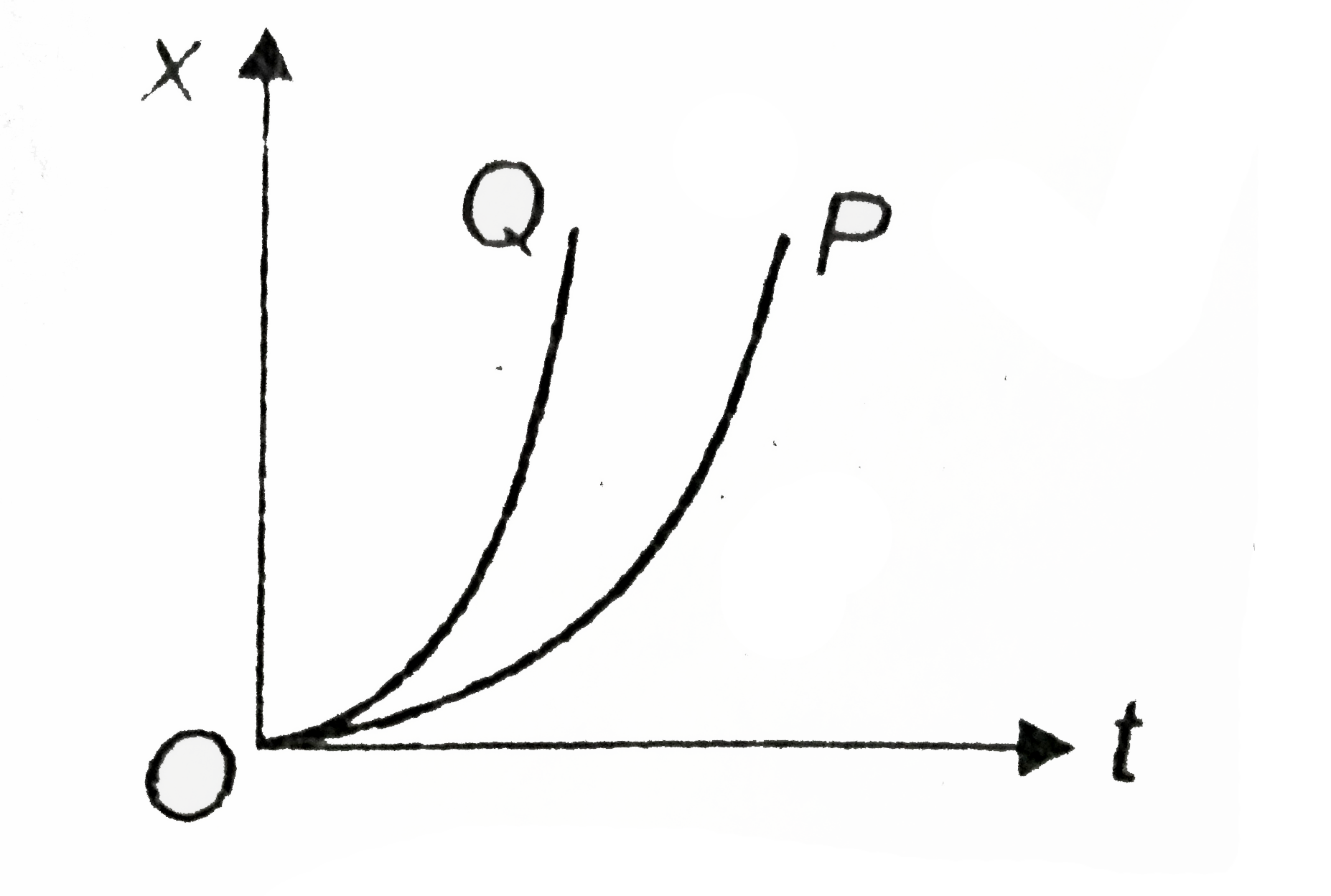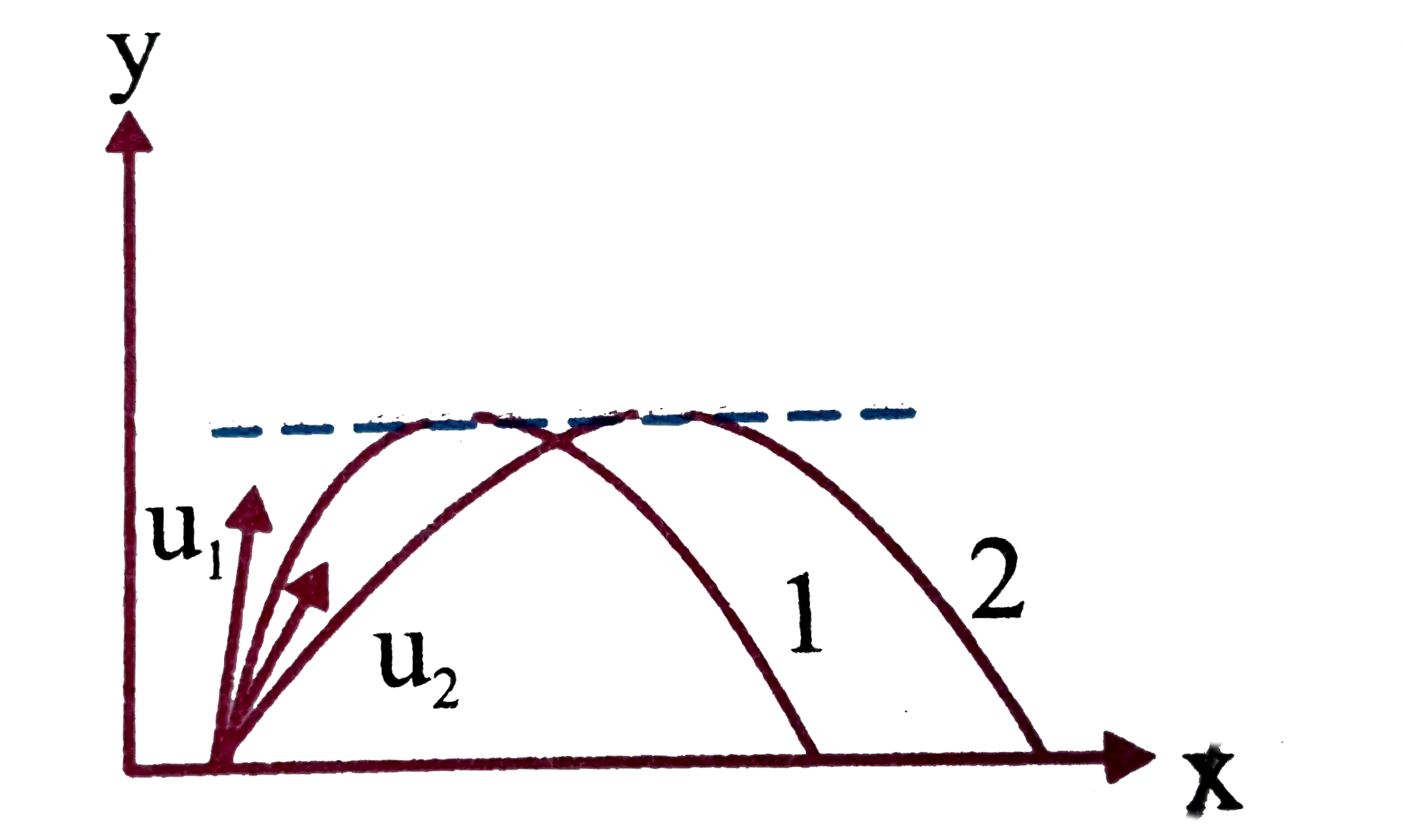Two tunnels are dug across the earth as shown in figure. Two particles P1 and P2 are oscillating from one end to the other of tunnel T1 and T2 respectively. At some instant particles are at position shown in figure. Then

Phase difference between the particle P1 and P2 is 180∘
Phase difference between the particle P1 and P2 is 120∘
Ratio of maximum velocity of particle P1 is to P2 is 2 : 1
Particle P1 and P2 may meet at the junction of the tunnels after some instant
The correct Answer is:A, C
Step by step video & image solution for Two tunnels are dug across the earth as shown in figure. Two particles P_(1) and P_(2) are oscillating from one end to the other of tunnel T_(1) and T_(2) respectively. At some instant particles are at position shown in figure. Then by Physics experts to help you in doubts & scoring excellent marks in Class 12 exams.
Updated on:21/07/2023Topper's Solved these Questions
- GRAVITATIONBOOK - MOTIONCHAPTER - GRAVITATIONEXERCISE - Exercise - 3 | level - 1 (Subjective | JEE Advanced)
13 Videos
- GRAVITATIONBOOK - MOTIONCHAPTER - GRAVITATIONEXERCISE - Exercise - 3 | Level - II (Subjective | JEE Advanced)
10 Videos
- GRAVITATIONBOOK - MOTIONCHAPTER - GRAVITATIONEXERCISE - Exercise - 2 (Level - I) (Objective Problems | Jee Main
13 Videos
- GEOMETRICAL OPTICSBOOK - MOTIONCHAPTER - GEOMETRICAL OPTICSEXERCISE - Exercise - 4 | Level-II
55 Videos
- HEAT - 1BOOK - MOTIONCHAPTER - HEAT - 1EXERCISE - EXERCISE -4 (Level - II) Previous Year | JEE Advanced
22 Videos
Similar Questions
Two tunnels - T1 and T2 are dug across the earth as shown in figure. One end of the two tunnels have a common meeting point on the surface of the earth. Two particles P1 and P2 are oscillating from one end to the other end of the tunnels. At some instant particles are at mid point of their tunnels as shown in figure. Then -

(a) Write phase difference between the particle P1 and P2. Can the two particles ever meet?
(b) Write the ratio of maximum velocity of particle P1 and P2.
View SolutionThe position-time graph for two particles P and Q moving on x-axis is shown in the figure. Then

View Solution
Knowledge Check
Period of small oscillations in the two cases shown in figure is T1 and T2 respectively . Assume fluid does not have any viscosity , then
 AT1=T2BT1<T2CT1>T2DCannot say anything
AT1=T2BT1<T2CT1>T2DCannot say anythingFigure shows two displacement-time graphs of particles P1 and P2
Their relative velocity is
 AzeroBnon-zero but constantCcontinuously decreasesDcontinuously increases
AzeroBnon-zero but constantCcontinuously decreasesDcontinuously increasesTwo identical vessels contain the same gas at pressure P1 and P2 at absolute temperature T1andT2, respectively. On joining the vessels with a small tube as shown in the figure. The gas reaches a common temperature T and a common pressure P. Determine the ratio P/T
 A[P1T1+P2T2T1T2]B12[P1T1+P2T2T1T2]C12[P1T2+P2T1T1T2]D[P1T2+P2T1T1T2]
A[P1T1+P2T2T1T2]B12[P1T1+P2T2T1T2]C12[P1T2+P2T1T1T2]D[P1T2+P2T1T1T2]
Determine the tensions T1 and T2 in the string as shown in figure.

View SolutionPosition time graph of two particles A and B are as shown in figure. Velocity of A w.r.t. B is
View SolutionA mass is suspended separately by two springs of spring constants k1 and k2 in successive order. The time periods of oscillations in the two cases are T1 and T2 respectively. If the same mass be suspended by connecting the two springs in parallel, (as shown in figure) then the time period of oscillations is T. The correct relations is

View SolutionTwo particles P and Q are moving as shown in the figure. At this moment of time the angular speed of P w.r.t. Q is

View SolutionTrajectories of two projectiles are shown in figure.Let T1 and T2 be the time periods and u1 and u2 their speeds of projection.Then

View Solution
